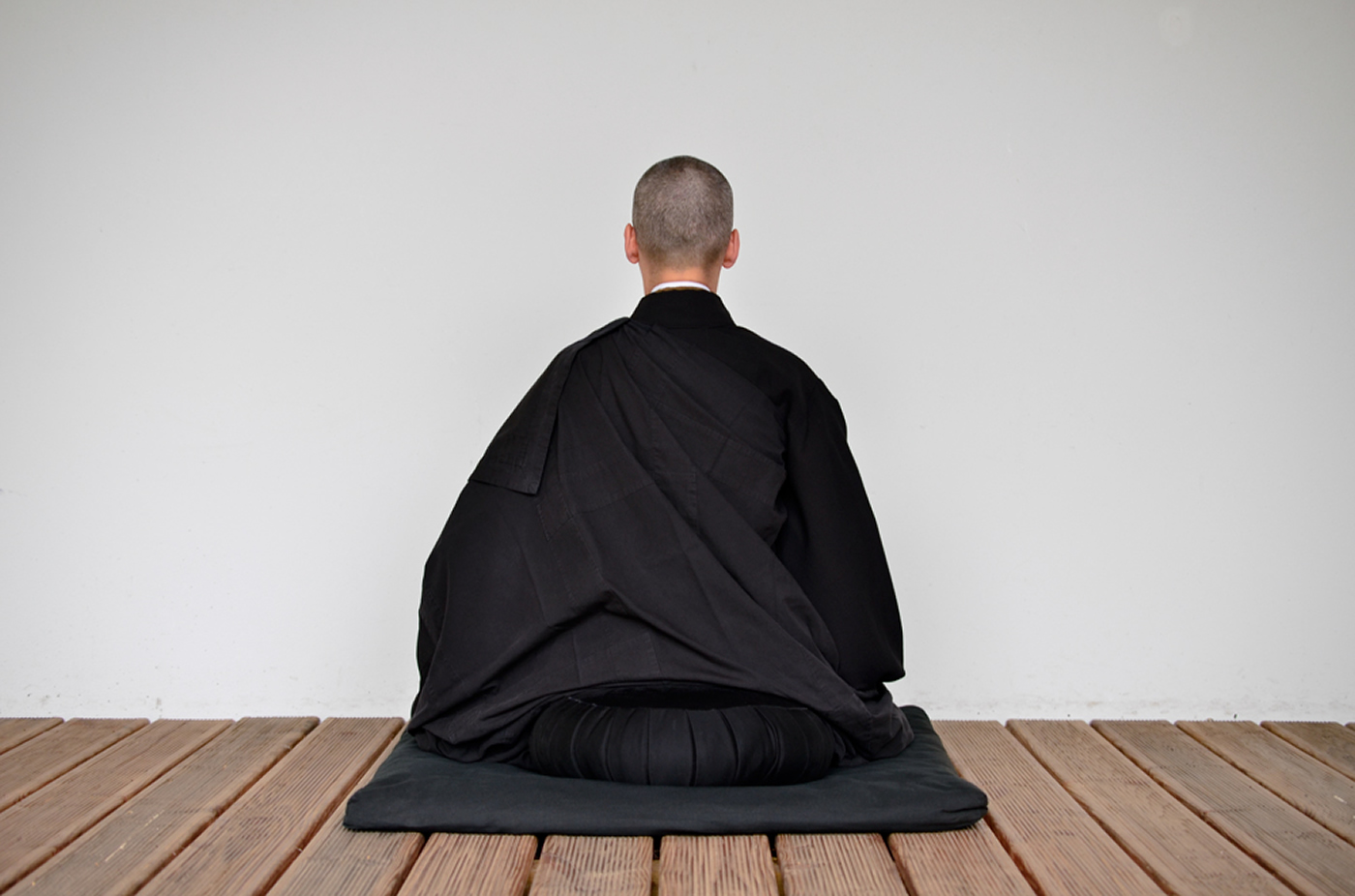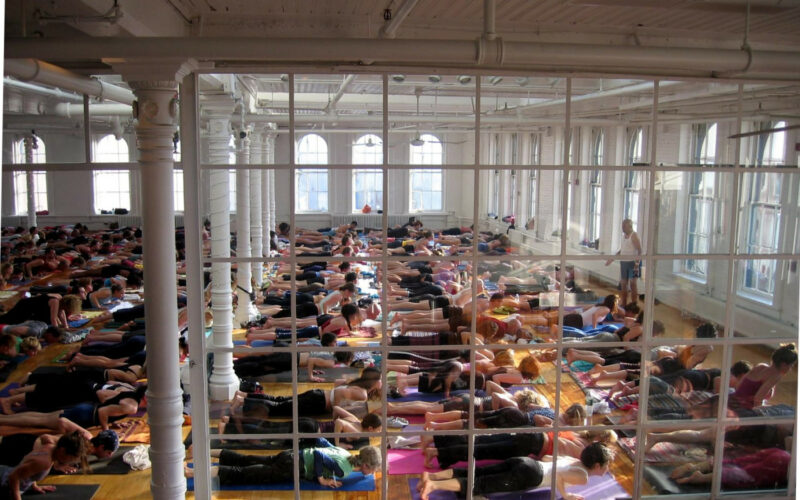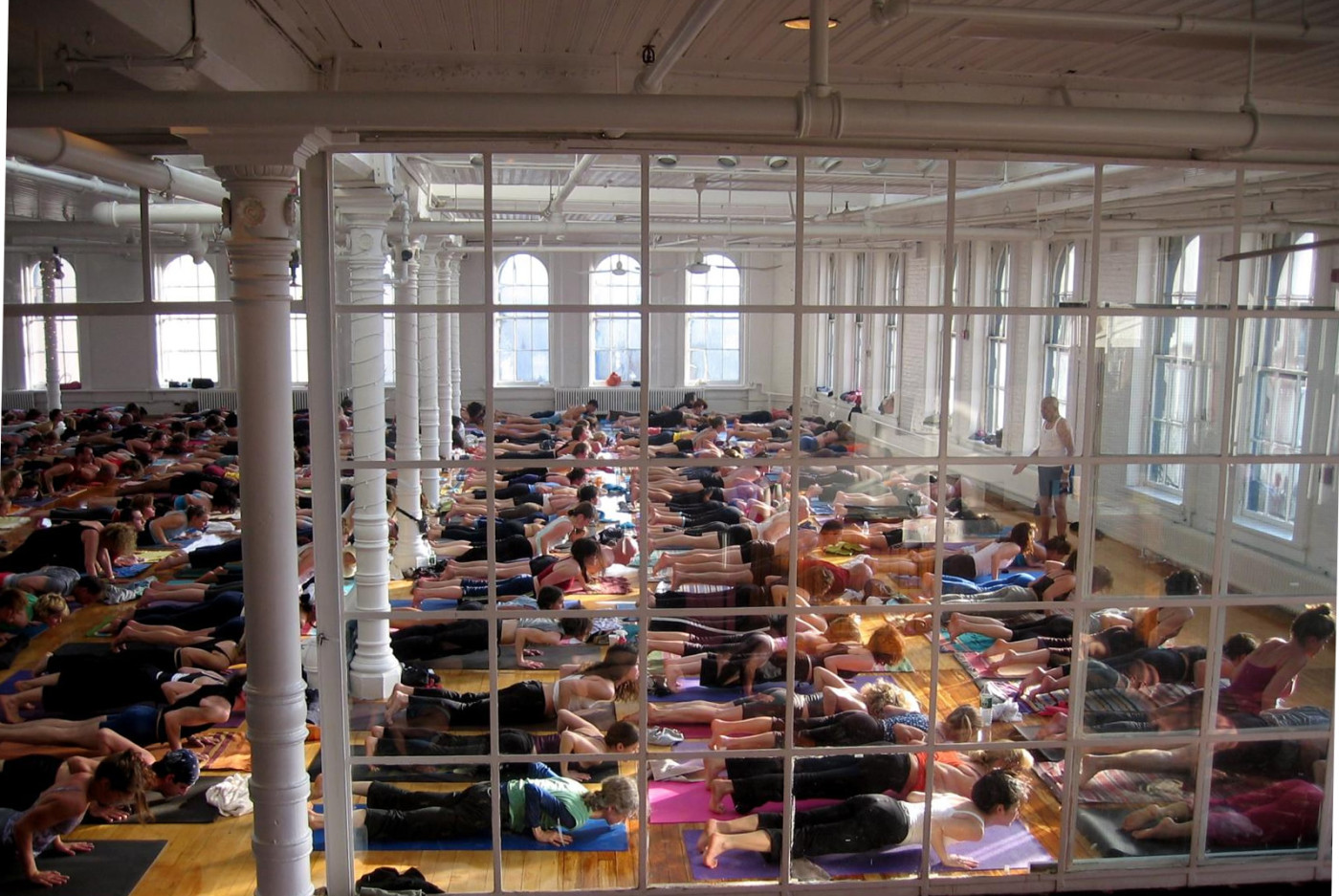If they don’t come back, it doesn’t matter what you can teach
As a yoga teacher, we need to spend a lot of time thinking about how to make our class a pleasant, enjoyable, uplifting experience. The goal of having a class is to help the student. We can’t help them if they have an unpleasant experience in our class and don’t come back.
First class trauma
Many of us can remember traumatic classes that we took early on in our yoga career. No one checked ahead of time to see if we had any yoga experience, nobody inquired about any injuries we might have, nobody asked us if we felt comfortable being touched in the class.
Everybody else in the class seemed to know each other, but the teacher didn’t ask us our name. Sometimes the teacher didn’t even tell us their name. Nobody showed us where to change our clothes before class, or where the box of Kleenex was.
We were asked to do movements that we had no business doing. We went home and developed aches & pains from the class, and we had no idea if they were rips and tears, or openings. We weren’t sure if we would ever go back for another class.
Type A / Type B
Type A people who come to their first yoga classes will try to do things they can’t do, especially if the teacher is making a big deal out of trying to.
In the simple example of uttanasa, standing forward bend, a new student with tight hamstrings (most males! most type-A males!) will fight to touch their fingers to their toes or to the ground, by bending at their lower back and crunching the vertebrae there—rather than bending at their hip crease and stretching the hamstrings, which is great for moving prana throughout the body, but which doesn’t look very good because then most of us don’t get our hands anywhere near their toes. And Type A’s don’t like not looking good!
Type A’s might come back to class, but the more classes they attend the more chance they have of developing a bad habit (such as lower-back crunch) which will last for years, and inevitably cause injury.
Type B’s will just get discouraged and retreat back to their couches after a traumatic experience in their first class or two.
Alternate poses, simple series
So make sure that when you teach a class you have alternate poses ready for those who either find a particular asana too difficult or too easy: watch your class as they move and react quickly when you see either extreme going on in the room. People will appreciate your concern for them to have a satisfying class, and they’ll come back.
Have a range of series in your “toolbox.” Always be ready to pull out a basic or intermediate series if the people who show up at your class call for a change of plan from what you intended to teach. The Niguma Chakra Series is a good one for any beginner, and each pose can be cranked up to a higher one if suddenly you find a bunch of hardcore yogis in the room.
The problem with Yoganese
We need to make sure that everybody in class knows what we’re talking about. “If you do this navasana with some good agnisara then it’s really going to help your transverse colon if your psoas muscles are in the right place!” We all remember sitting in an early yoga class and getting the distinct impression that the teacher was trying to impress us with a bunch of Sanskrit words that we didn’t understand (and which we later learned they were mispronouncing anyway).
It’s good for people to learn the Sanskrit names of poses and the names of muscles and bones that will help them get more precise about honing their body. But we have to make sure they don’t feel dumb or left out when we use technical terms. Otherwise this might influence their decision not to come back to class, and if that happens we can’t help them.
A good option is to use appositives with normal words in them right after a technical term—then the student can learn the terms. “If you do this navasana—where you try to keep your legs up; and do some good good agnisara—those sharp breaths; then it’s going to help your transverse colon—the part of your intestines that helps carry waste across the entire front of your belly…if the psoas muscles that connect your lower back to your hips are in the right place.”
On time
People value their time more than their money. Start (and end) the class on time and discourage people from coming in late; when it’s time to begin, make a point of looking at the clock and saying, “Well, it’s nine o’clock sharp, let’s start the class!” Get to the classroom space a half an hour early to give yourself time to collect your own thoughts, and to greet students as they come in, welcoming any questions they might have.
Encourage
Many of us think of our role as a teacher in terms of making “adjustments” as the students go through their asanas. Remember that a lot of the students in your class might perceive an adjustment as a correction, or even a criticism. Be extra sure to balance, for example, correction of alignment in one part of the student’s body with some encouragement for what’s going on in another part: “Move this arm up to here; wow, your breathing is excellent!” Don’t make up things to encourage—don’t be patronizing. Look for something you truly admire in every participant in the class, and let them know what you see.
A balance of talk
A lot of people come to a yoga class because they will hope to have a chance to be quiet and sweat, and not have to talk or listen to a lot of talking. If it’s your style, keep up a running commentary during the asanas, but be sure to give people a break and be quiet sometimes too. It’s all part of having a semi-spiritual experience in a yoga class, which helps keep people coming back.
Music
Almost everybody enjoys a little music during the class—either at the beginning, during shavasana, or sometimes throughout the class to pep it up. I’ve taken fun classes at a place called Yoga Hop in Los Angeles, and the cheerful, loud music actually helps me push further into some difficult asanas.
Or you may want to set a more peaceful mood with the music; in which case simple kirtan music, or even classical music, is nice. I’ve noticed that often in my classes people seem to get more peaceful if the music has no words; this is obviously especially true in a class of people with different first languages.
And of course if you’re going to play music in shavasana, final relaxation (there’s the appositive we were talking about), quiet peaceful music is highly preferred. People are much more sensitive in shavasana since their eyes are closed, and the asanas have opened up their pranic channels. They will listen much more closely, and they will be much more moved by the music: if you choose the song carefully, it’s not unusual to see several people weeping. This is a cathartic experience for people and another thing that draws them back to your classes, allowing you to help them more with the miracle of yoga.
On the other hand, there are few things more irritating than a bad sound system making screeches during the class; or the teacher spending 15 minutes of the class trying to figure out how their iPod is supposed to fit into the sound system, or fiddling around to find the music they wanted to play.
Get your mix ready before class and make sure it works on the sound system during that half hour before the room is full. Really good teachers really care about the mix and try to tailor it to the moods of the different asanas as they go through the series they’ve chosen.
Kirtan music is especially simple to perform, and it’s great if you can learn to play some harmonium and perhaps sing a devotional tune either before class or during shavasana. If you take the time to find a good teacher, it will only take a few days to learn simple chords. Having people sing along in call & response may seem a little corny at first, but actually most of them like it.
Music coming out of a living person is infinitely more powerful than a recording; trust this, and trust that you will have your own unique sound—don’t worry if it doesn’t seem like part of a recording studio somewhere. Your students will appreciate your music if it comes from your heart. Again, all of this helps make the class a pleasant experience, and will bring people back, which will help them.
All the flavors of Om
Chanting Om at the beginning and/or the end of a yoga class has become somewhat customary in Western yoga, and that’s a good thing. It’s good to know what the Om really means; here’s how it’s explained in the classics of the Buddhist yogic tradition.
Om is composed of three different sounds: ah, oo, and mm. Together these three make Om. The ah sound is explained as referring to enlightened action: reaching out to help others. The oo is explained as enlightened speech: comforting others with our words. And the mm is enlightened thought: the intention to be of service to others.
I think it’s very nice to remind participants in a class of this meaning when we chant the om, and I think it’s really important to remind them of how to translate this to their own behavior in their own daily lives: As Shri Dharma Mittra puts it, Be nice to others.
There are lots of ways to do the Om. I find it useful to ask students to do a long exhale together first (a good habit in general when doing pranayama); then inhale deeply, then Om. Sometimes it’s nice to ask people to keep repeating Om’s at their own pace, so that the sound goes on & on in the room. Sometimes it’s nice to have everyone whisper the Om, and sometimes to simply imagine it in a quiet moment at the end of class.
Bowing to our students, to the divine in them, is a really good habit after Om, and naturally they’ll begin bowing back, which honors the teaching.
If you’d like to learn more about the meaning of Om, then check out the following post on The Knowledge Base below:
 On the Meaning of Om: A Brief Essay on the Meaning of the Sacred Syllable Om (2005, Tucson, Geshe Michael Roach)
On the Meaning of Om: A Brief Essay on the Meaning of the Sacred Syllable Om (2005, Tucson, Geshe Michael Roach)
Meditation
For a lot of people, a yoga class is the only chance they get to be really quiet and introspective in the entire day. So it’s nice if you can work in a few minutes of meditation, either at the beginning or at the end. If it’s at the beginning, it settles the mind and sets the breath for the class. If it’s at the end, it can lead to a deep dedication of the benefits of the class (although I think that meditating too long at the end can cause the body to go cold in its own sweat, and tighten up).
At the same time, appreciate the fact that most people come to class to have a good workout and clear their heads…so don’t go overboard on the meditation. You can offer a separate meditation class at a different time, for those who are so inclined.
Yoga vacations
There’s a point in the The Niguma Chakra Series towards the end where people are on their bellies for a shalabhasana (locust pose) followed by a dhanurasana (bow pose), and we ask them to pillow their left cheek and right cheek, respectively, on their hands after the two poses. We call this a “yoga vacation,” which lasts for 5 slow breaths.
This is also very effective in the fetal position at the very end of class, when people roll to the left side out of corpse pose with their knees to their chests, and pillow their heads for a moment on their hands.
There seems to be something very primeval and comforting about doing this. During the belly poses, it gives new people a chance about 3⁄4 through the series to regroup and catch their breath, which we’ve discovered gives them a huge psychological boost to get through to the end happily. And we’ve discovered then that students are much more likely to consider the whole series a “success” and to want more yoga afterwards.
Try it in your own class and see!
Lights down gradually
Obviously people go a lot deeper into final relaxation if the fronts of their closed eyelids are not being bombarded by the harsh fluorescent lighting which is (inexplicably) common in most yoga studios. I noticed first at Laughing Lotus Studio in New York (and then found other studios doing it) that all the teachers were encouraged to start turning down the lights not just going into shavasana, but gradually as the asana series wound down into its final 10 minutes or so, before shavasana.
This is a great way to take students slowly into the final relaxation, and gives them a head’s up that things are toning down towards that final rest.
Nothing compares with the shavasana itself if the room is kept almost dark, and if the staff have been trained to maintain absolute silence during this time (not kicking over water bottles as they walk around the dark room). We have never in our whole lives laid down together in the dark with a room full of complete strangers, and this is one of the most magical moments of any yoga class.
Work hard to make shavasana a very special time and…people will come back.
Human touch
In the DCI yoga sessions for business executives, the staff always walks around the room very quietly during final relaxation to spend a few very quiet, tender moments massaging the foreheads of the participants, who are warned beforehand that this will happen and encouraged to shake their heads if they feel uncomfortable with it. We often use some (not too stinky) essential oil, just a drop—lavender is particularly relaxing for most people.
Simply put, almost nobody in everyday life gets enough kind, sincere human touch (free of any ulterior motive). You’d be amazed to know how many people come to a yoga class just hoping that someone will share some innocent human touch with them. If you want students to come back, if you want to help them, then consider learning from a qualified person how to do some kind of brief neck, foot, shoulder, or forehead massage during these moments.
Offer to stay
For some reason, especially as a new yoga student, I have always found it disconcerting when the teacher makes a beeline for the door the minute the class ends. Stick around! Sit down, smile warmly, encourage anyone to approach you who has a question or suggestion.
Walk up to new people especially and tell them what a great job they did, and how fantastic they’re going to look and feel if they keep coming back. Ask them how their experience was, and learn from what they say, for next time.
People who are having trouble with a particular pose (say, headstand) feel very grateful if you take a few moments at this point to help them, on their mat, with some tips—that’s the whole reason they came to take a class with a teacher, and this may be a more appropriate juncture to spend some time helping them than during the actual class, when it may disrupt the flow for everyone else.
Tailor the sermon
Let’s face it: For a lot of people, yoga studios are the new churches, and the only spirituality they get during the whole week is confined to the pep talk in the first few minutes of a yoga class. Make it the best you can give them, to help their lives.
Begin to prepare the day before for what you’d like to say. It’s really nice to begin from a quotation from some inspirational spiritual source, and work from there. Don’t go on too long—they came to sweat and open their spirit that way. But do give them a theme for the next few days of their life…and it’s very appropriate to come back to that theme from time to time during the actual asanas, and for a few moments after final relaxation.
Pick something from the classics that has some meat, even if it’s sweet, and push to make it something which relates to everyone’s real, day-to-day life…something they can take out of the studio and use at work and with their family, that very day.













